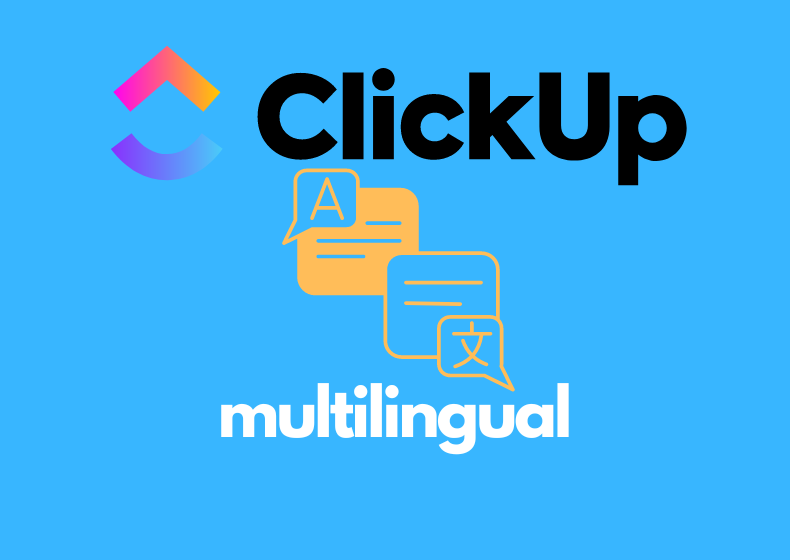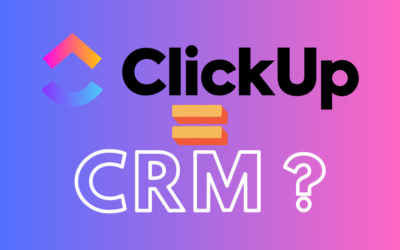If you’re looking for information on how to use ClickUp in different languages, this article provides the answer. ClickUp has only a few languages available, but some solutions facilitate its use among other languages users. Utilizing browser translation or linguistic adaptation of specific elements are just a few options, making ClickUp in other languages increasingly accessible for other entrepreneurs.
This comprehensive guide to ClickUp in different languages aims to show how to maximize the platform’s capabilities by adapting it to users’ needs. We’ll start by explaining how to enable translation, through manually translating interface elements, to the benefits of implementing ClickUp in daily work. Then, we’ll answer the question of what benefits come from adapting ClickUp to Polish realities. The tips and advice provided aim to help teams make fuller and more effective use of the platform in their operations.
How to Enable ClickUp Translation to different languages
To use translated ClickUp, users can utilize two methods: translation via the web browser and manual translation of individual interface elements. Both methods have their advantages and can be used depending on users’ needs and preferences.
There are two ways: browser translation and manual translation
Browser Translation Using translated ClickUp is possible thanks to the web page translation feature offered by most modern browsers. To use this option, the user should:
- Open ClickUp in a browser that supports web page translation (e.g., Google Chrome, Mozilla Firefox).
- Right-click on the page and select the “Translate to…” option or use the automatic translation prompt that appears when the page is first loaded in another language.
- The browser will translate the entire ClickUp interface content into different language, enabling easier and more intuitive use of the platform. Below is an example of before and after translation in Firefox.
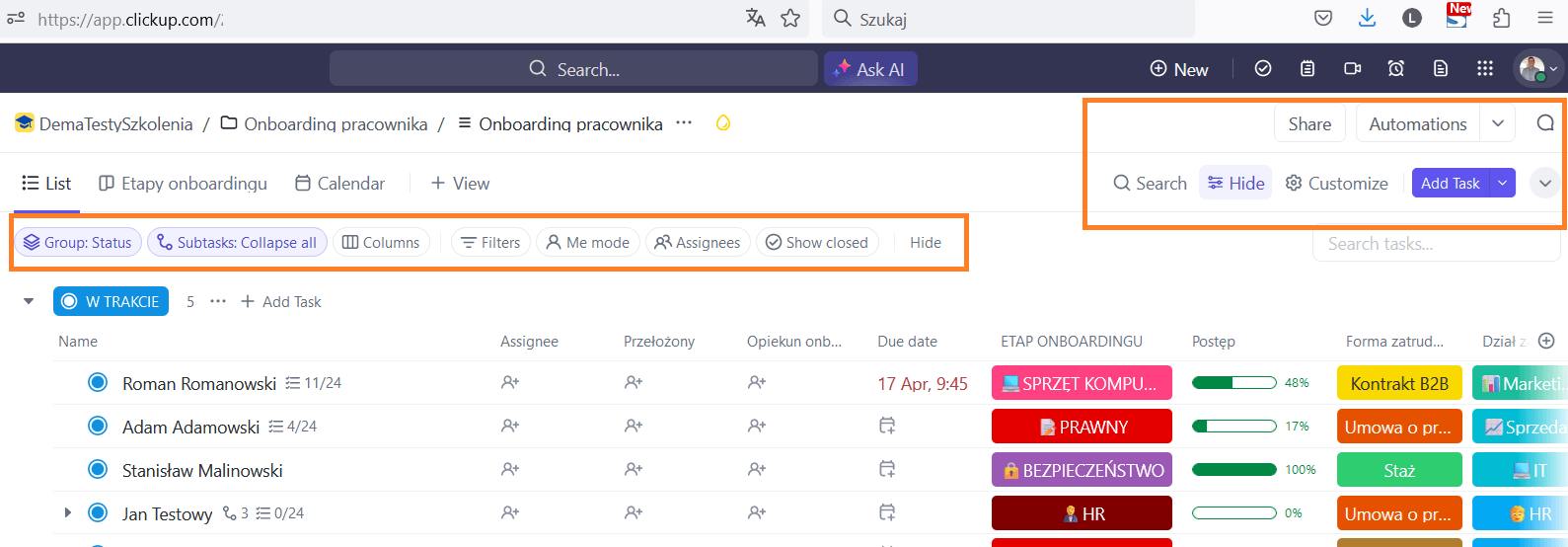
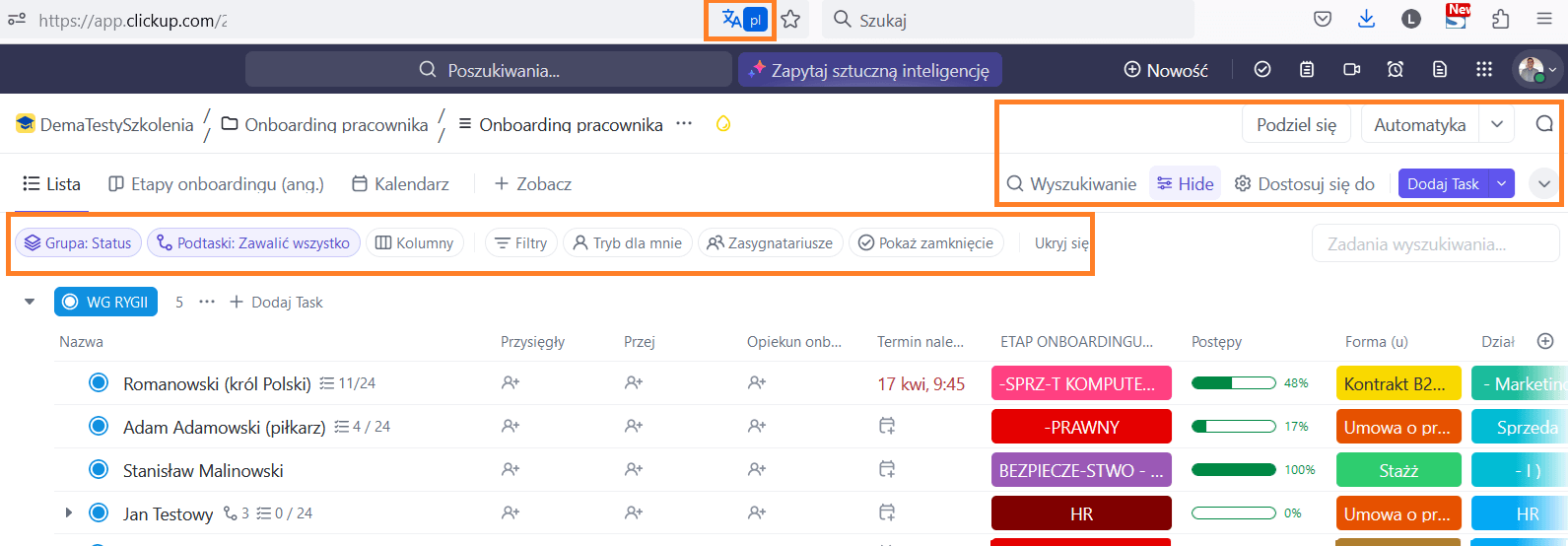
Translations in this method are not perfect. But they help those who do not know English navigate the interface.
Manual Translation The second method is to manually translate interface elements, which the user can customize according to their needs. However, it should be noted that not everything can be translated in this variant. The texts shown in the menu in the above screenshot (orange outlines) cannot be manually translated. The manual translation process includes:
- Changing the names of workspaces, areas, sections, and other elements to their equivalents, which facilitates understanding and organizing work in the tool.
- Personalizing statuses or custom fields, allowing for better adaptation of the tool to the specifics of the work environment.
- Using task names in different languages, which can be particularly useful in multicultural teams where different language is preferred. Below are examples of status changes to the language of choice and changes in custom fields.
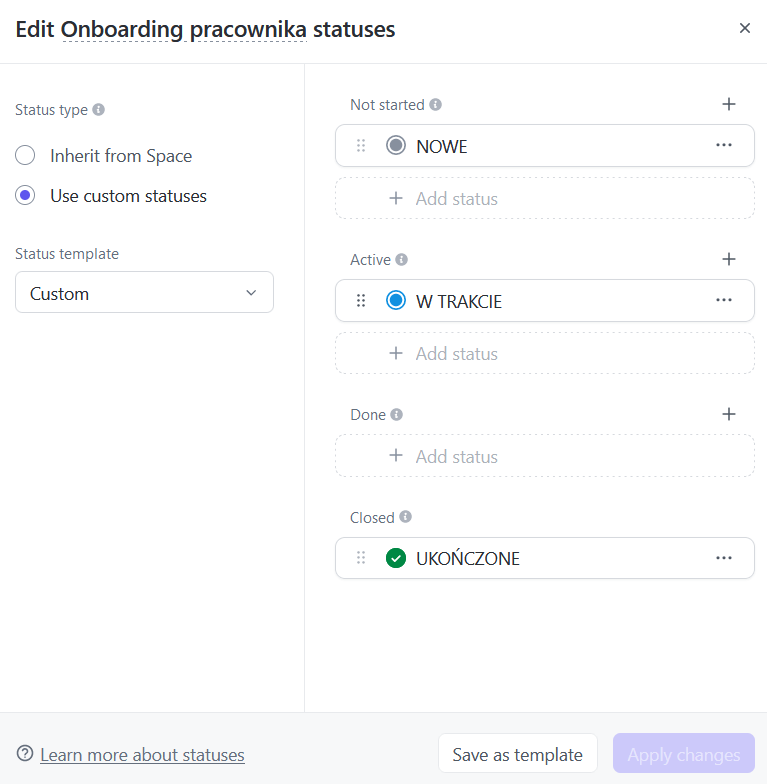
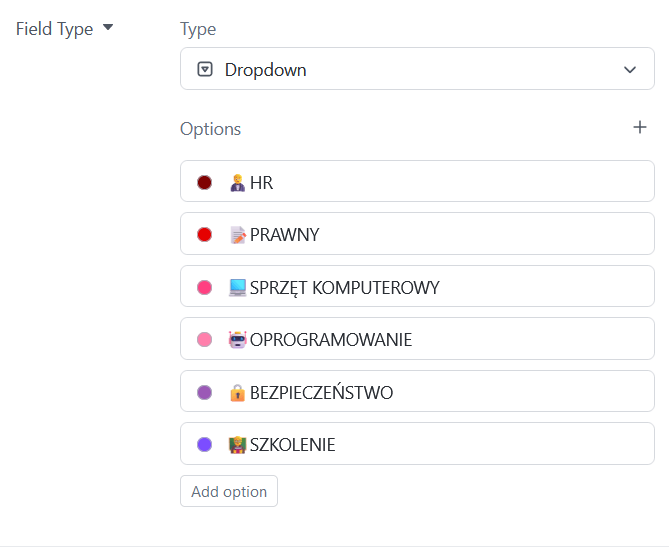
Both methods, although differing in approach and user involvement, offer effective solutions for those wanting to use ClickUp in different language. The choice of the appropriate method depends on individual preferences and the specifics of the team’s work.
Summary
After exploring the possibilities and benefits of using ClickUp in different language, both through browser translation functions and manually customizing elements such as statuses, custom fields, or task names, it becomes clear that ClickUp offers significant value to foreign language users despite the lack of official language support. Adapting these methods allows for better work organization, increased efficiency, and facilitated communication in a multicultural environment, which is invaluable for enterprises and project teams.
It should be emphasized that while the current solutions are effective, there is still room for development and the introduction of official different language support, which would further simplify the use of ClickUp. Implementing such changes would undoubtedly contribute to expanding the user base in other countries. Therefore, we encourage exploring available functions and customizing the platform to individual needs, while also looking forward to future improvements that will make ClickUp even more intuitive for foreign language-speaking users.
Contact us today – We will help you implement ClickUp comprehensively!
Click below to learn more!
Schedule a free consultation
Free E-book – Project Management Essentials!
We’re excited to announce that here at BeProductive, we’ve prepared a free e-book covering the fundamentals of project management! This guide is perfect for anyone taking their first steps in the...
We will implement CRM for you in ClickUp
CRM is an innovative solution that significantly impacts how companies interact with their customers. At BeProductive, we understand how essential it is to effectively manage contacts, leads, and...
How Business Process Automation in ClickUp Can Improve Your Business?
Business process automation has became the key to success. As entrepreneurs, we face the challenge of increasing efficiency and optimizing our operations. ClickUp, a versatile project management...

